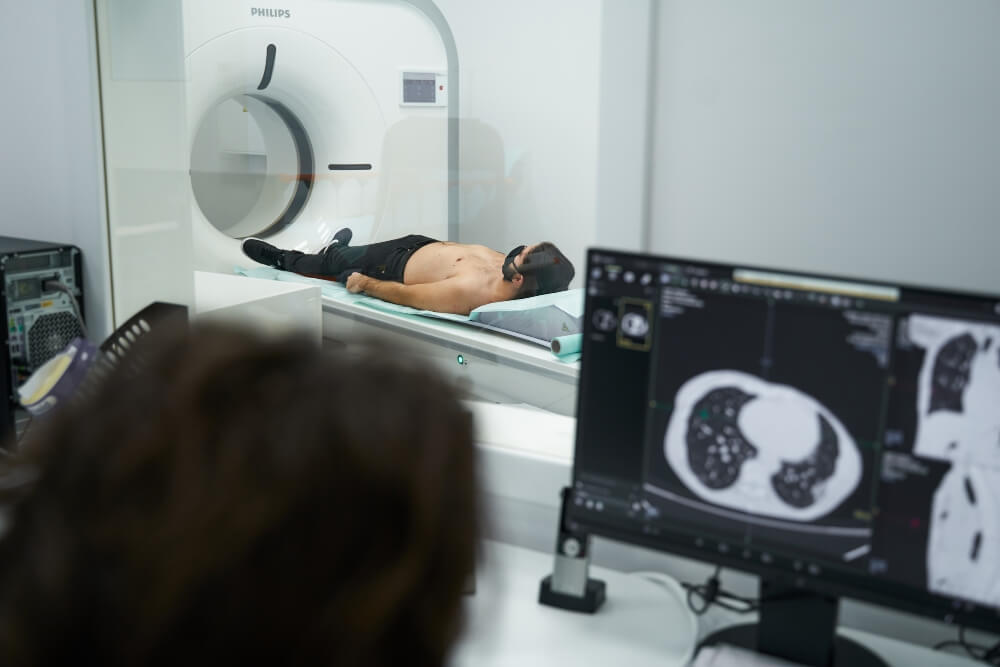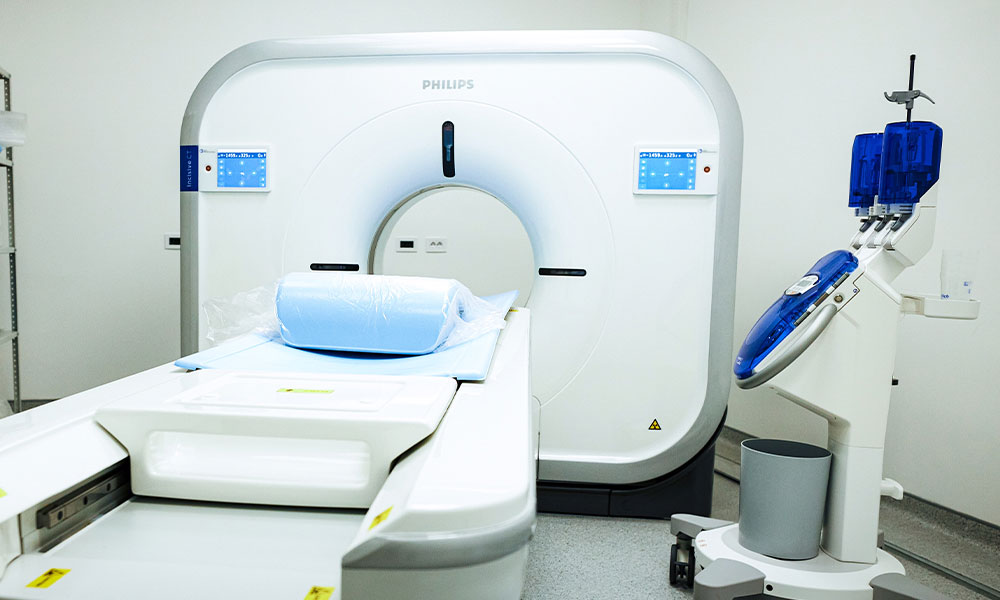If you have chest pain
A scan is a quick and non-invasive method to assess the risk of developing cardiovascular diseases. It can detect atherosclerotic changes in the coronary artery before more serious narrowing occurs, leading to coronary artery disease and ultimately, a heart attack. Timely diagnosis and prompt initiation of appropriate therapy reduce the risk of permanent consequences, disability, and even death.
If you experience stroke symptoms
Symptoms indicating a stroke include confusion, numbness, weakness, or paralysis on one side of the body, drooping of the mouth and face, slurred speech, difficulty moving, double vision, loss of balance, and dizziness. It is important to recognize them quickly and seek medical attention immediately, followed by a CT scan of the head and neck. Providing the correct diagnosis and therapy within the first 3 hours of stroke symptoms can prevent permanent disabilities.
If you have severe headaches
A brain aneurysm is potentially life-threatening, and it is crucial to diagnose it early. An aneurysm is a weakened area of a blood vessel that can balloon out and potentially rupture. Patients often begin to feel symptoms before the aneurysm ruptures, typically severe headaches accompanied by dizziness, temporary loss of consciousness, and vision problems. Immediate detailed diagnostics, including a CT scan, are necessary when these symptoms occur.
If there is suspicion of COPD
Typical symptoms indicating chronic obstructive pulmonary disease (COPD) include subjective feelings of shortness of breath (dyspnea), wheezing, and chronic productive cough. COPD diagnosis involves several methods, with the most advanced and precise being a CT scan of the lungs, providing clear images of lung and potential changes that may indicate COPD or lung cancer.
If you have severe abdominal pain
If you experience severe abdominal pain radiating to the back, worsening after meals, accompanied by nausea, vomiting, fever, chills, and other symptoms, it is crucial to see a doctor immediately. These are often symptoms of pancreatitis, a common indication for a CT scan, which clearly and quickly shows pancreatic changes.
If you have back pain or have been injured
MSCT spine scanning provides precise information about vertebrae and other spinal structures and tissues, as well as spinal injuries or diseases. It is performed when other types of examinations, such as X-rays or physical examinations, are not sufficient for diagnosis. MSCT spine scanning is used in cases of suspected disc herniation, tumors, and other injuries, to assess the extent of damage, structural anomalies of the spine, or vascular malformations. It is also used to evaluate the effects of spinal treatment, post-operation or therapy.
The CT scan is painless and non-invasive, lasting 15-30 minutes. It typically involves the following four steps:
- The patient lies flat on the CT bed, with arms raised above the head, while the technician initiates the scan.
- The bed moves into the scanner, and the scan begins.
- Sometimes, the patient may receive contrast intravenously to enhance certain organs’ visibility on the scan.
- It is crucial for the patient to lie still during the scan to obtain the best possible images. In some cases, the patient may be asked to briefly hold their breath to prevent chest movement up and down.
Immediately after the CT scan, patients can return to their usual daily activities. If contrast was administered during the scan, it is essential for patients to consume plenty of fluids (water) afterward to eliminate the contrast agent from the body.
PULS Diagnostic Center has a technologically advanced, low-dose 128-slice scanner of the latest generation, which emits significantly less radiation than other models. Our experts are available for consultations and scheduling 24/7.
Schedule an appointment at 061 2000725.





